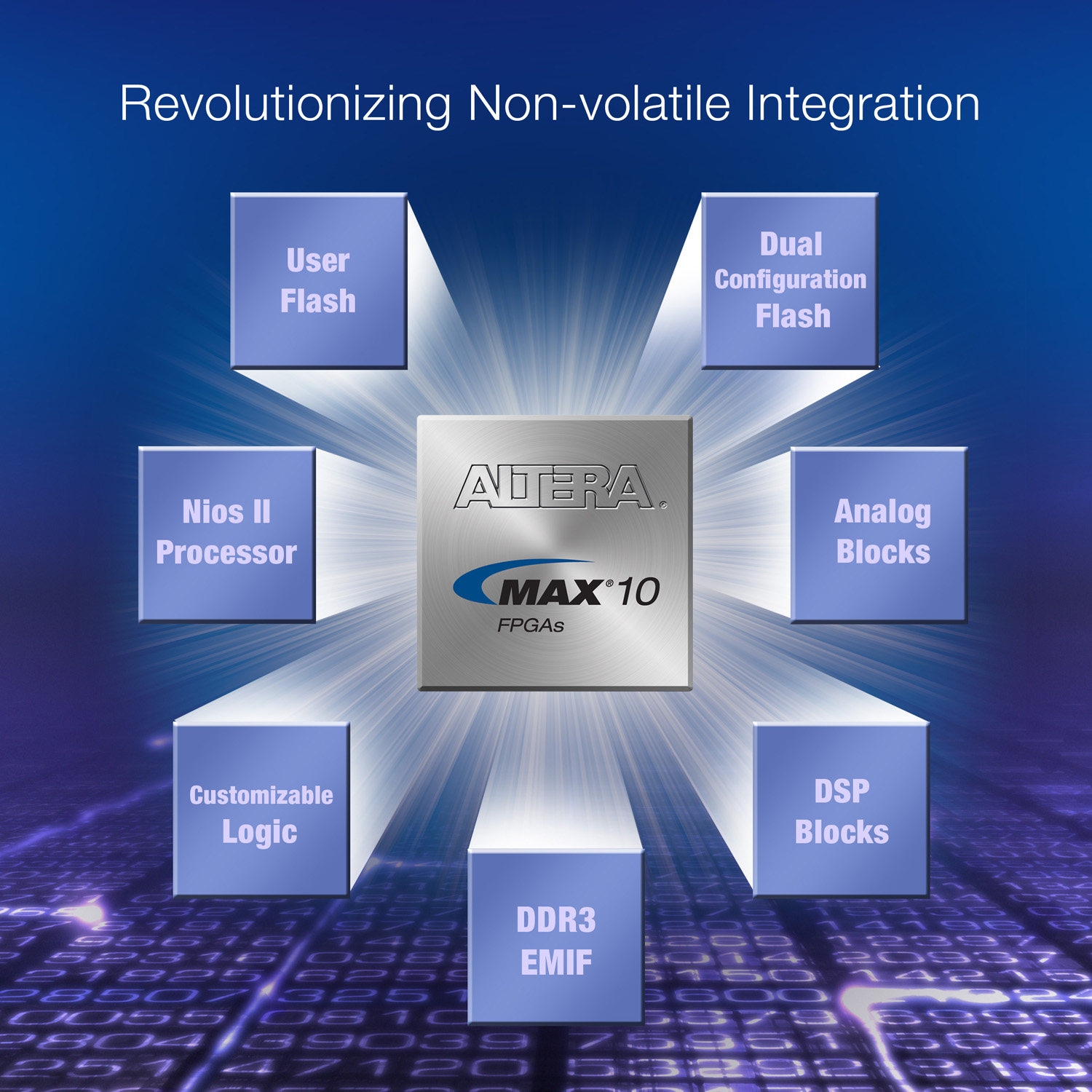FPGAs integrate embedded flash process technology
Featuring TSMC’s 55nm embedded flash process technology, the MAX 10 FPGAs have been introduced by Altera. TSMC's technology enables the non-volatile FPGAs to provide dual-configuration flash, analogue and embedded processing capabilities in a small-form-factor, low-cost, instant-on programmable logic device.
Altera claim that the FPGAs offer reduced material costs while increasing board reliability. According to the company, the integrated FPGAs provide up to 50% board area savings compared to competing FPGAs. The MAX 10 FPGAs, which can be configured in less than 10ms using on-die flash memory, are offered with instant-on architecture. In system management applications, instant-on allows the FPGAs to be the first usable device on a system board and control the bring-up of other board components. For data path applications, the architecture allows the FPGAs to provide responsive user interaction when powered on.
Two FPGA designs can be contained in a single chip through the on-die flash storage integrated in MAX 10 FPGAs which supports dual configuration. With the dual-configuration capability, the device can perform fail-safe upgrades. This involves one block being designated for upgrade images and the other reserved for a 'safe' factory image. Through this capability, systems can be deployed more quickly, maintenance costs reduced and operating life extended.
Analogue blocks, which include ADCs and temperature sensing diodes, are integrated within the MAX 10 FPGAs. With this analogue functionality, the FPGAs can be used in applications that require system monitoring, such as temperature control and touch-panel human-machine interface control. The blocks reduce board complexity, lower latency and deliver more flexible sample-sequencing, including two-channel simultaneous sampling.
To provide embedded developers a single-chip, fully configurable, instant-on processor subsystem, the MAX 10 FPGAs support Altera’s soft core Nios II embedded processors. With this, complex control systems can be efficiently managed.

Due to the MAX 10 FRGAs' small package options, which are as small as 3x3mm, the devices are suitable for space-constrained systems such as automotive and industrial applications. The FPGAs are also suitable for advanced communications, compute and storage applications. Here they can efficiently manage complex control functions, while performing system configuration, interface bridging, power sequencing and I/O expansion.
Altera’s Enpirion power devices can enhance the total system value the MAX 10 FPGAs offer in the areas of integration and package size. These devices simplify board design and reduce BOM costs. The FPGAs are available in commercial, industrial and automotive (AEC-Q100) temperature grades.
“MAX 10 FPGAs address a broad market need to save space, cost, and power by integrating more capability into a single device” said Patrick Dorsey, Senior Director of Product Marketing, Altera. “Hundreds of customers in the MAX 10 early access programme have already realised the benefits from the combination of high performance programmable logic, analogue, DSP, micro-processor capabilities, and embedded flash technology provided by MAX 10 FPGAs with the Quartus II development software and pre-configured development and evaluation boards.”






